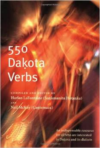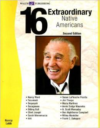Description
Please note that the content of this book primarily consists of articles available from Wikipedia or other free sources online. Pages: 40. Chapters: Ancient Pueblo Peoples, Mesa Verde National Park, Sand Creek massacre, Oasisamerica, Ute people, Prehistoric Southwestern Cultural Divisions, Battle of Beecher Island, Colorado War, Canyons of the Ancients National Monument, Shoshone people, Hovenweep National Monument, Cliff Palace, Fremont culture, Yucca House National Monument, Chief Ignacio, Lowry Pueblo, Mesa Verde Administrative District, Chimney Rock Archeological Site, Comanche Campaign. Excerpt: Ancient Pueblo People or Ancestral Pueblo peoples were an ancient Native American culture centered on the present-day Four Corners area of the United States, comprising southern Utah, northern Arizona, northwest New Mexico, and southern Colorado. They lived in “houses” called pueblos in which they lifted up ladders during enemy attacks, providing the Pueblo peoples security. The cultural group has often been referred to in archaeology as the Anasazi, although the term is not preferred by contemporary Pueblo peoples. The word Anasazi is Navajo for “Ancient Ones” or “Ancient Enemy.” Archaeologists still debate when this distinct culture emerged. The current consensus, based on terminology defined by the Pecos Classification, suggests their emergence around the 12th century BCE, during the archaeologically designated Basketmaker II Era. Beginning with the earliest explorations and excavations, researchers postulated that the Ancient Puebloans are ancestors of the modern Pueblo peoples. In general, modern Pueblo people claim these ancient people as their ancestors. The name pueblo was given by Spanish, and means in the Spanish language “village.” The name Anasazi is an exonym, given by the Navajo people, who now reside in formerly Pueblo territory, and means “ancestral enemies.” Anasazi territory shown in light brownThe Ancient Pueblo were one of four major prehistoric ….






Reviews
There are no reviews yet.